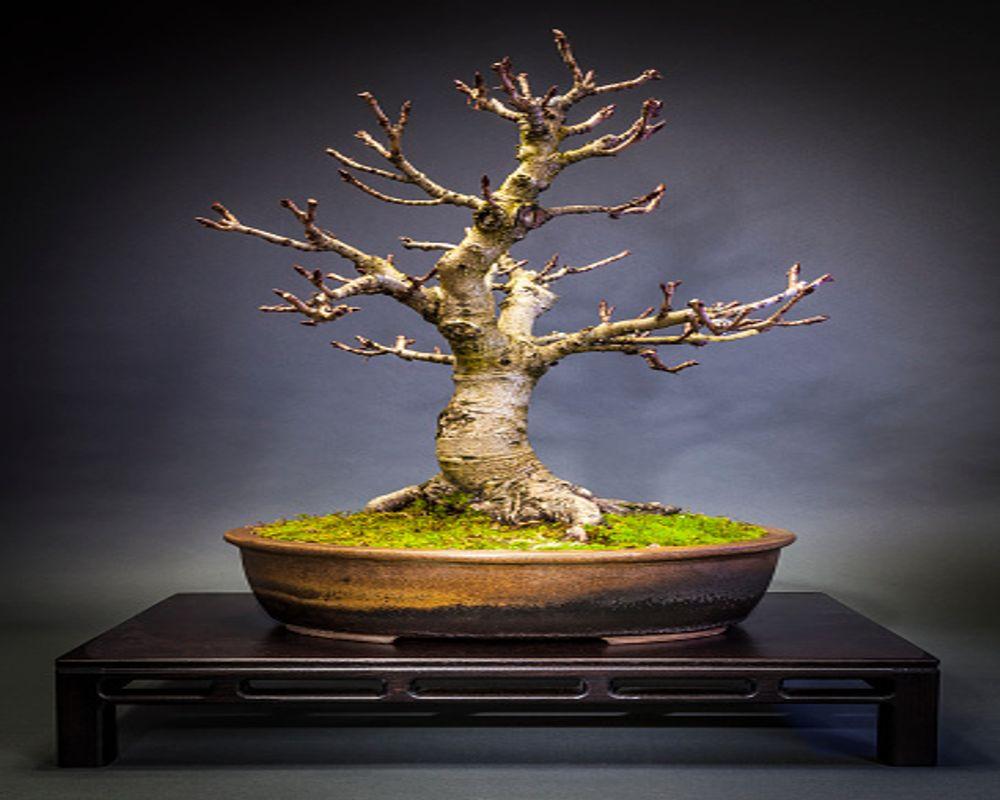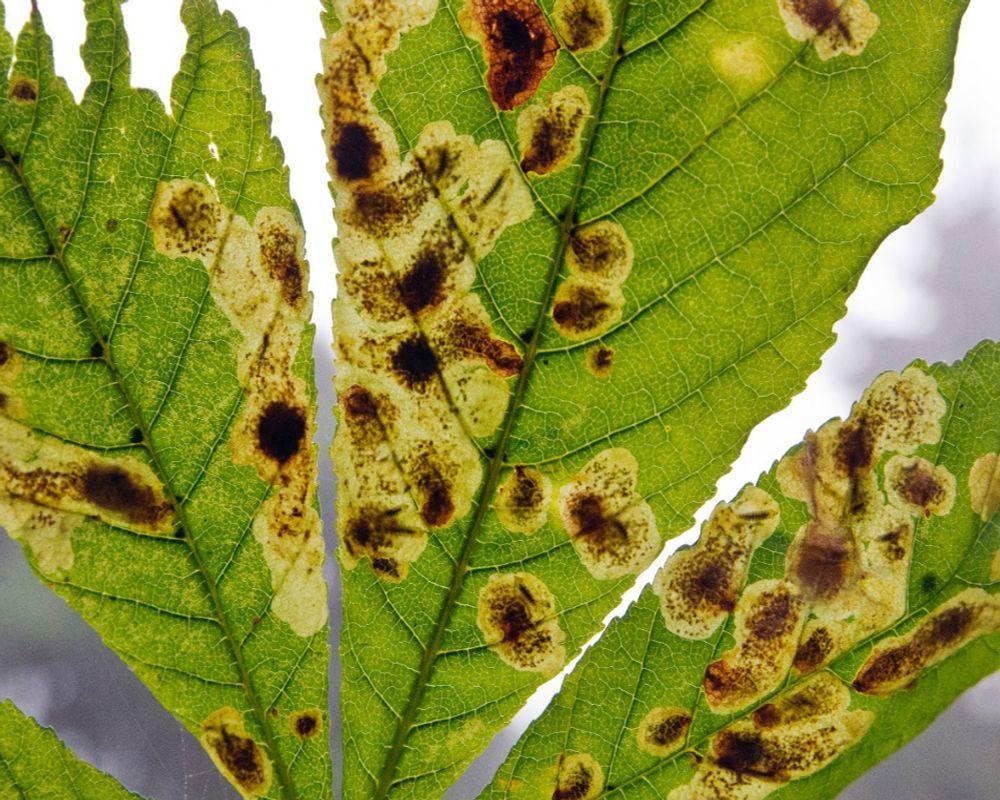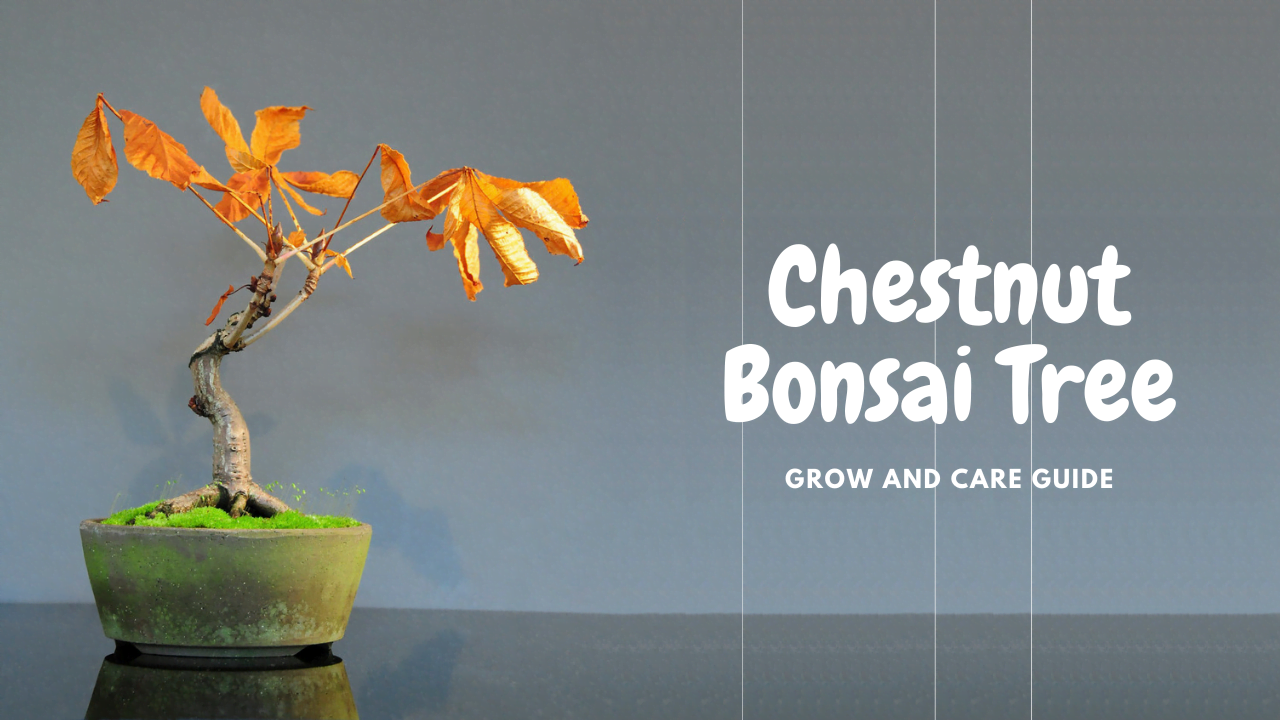Do you know that you will not usually find the Horse Chestnut Bonsai tree in many bonsai gardens?
Horse Chestnut trees are incredibly large in the wild. But producing a smaller Chestnut bonsai is not easily accomplished. Therefore, not many Chestnut bonsai are produced.
But with good research, I am here to guide you on how to grow and care for your chestnut bonsai so that you can grow a healthy one.
With that said, let us begin to grow a Chestnut bonsai successfully,
Chestnut Bonsai General Information

The Horse Chestnut originated in Europe- specifically the Balkans. It is a deciduous tree that reaches a height of seventy-five feet in the wild. The tree is easy to grow and cultivate. But because of its normal large size, it needs significant pruning and trimming to grow as a Horse Chestnut bonsai.
The scientific name of this species is Aesculus hippocastanum. And there are two popular varieties- Common Horse Chestnut and European Chestnut.
The Chestnut bonsai produces large distinctive foliage, consisting of five to seven oval-shaped leaflets. Later in summer, the plant produces long stem, snowy white candles of flowers that turns easily into shiny mahogany brown nuts or seeds. It has a very large seed or nut, nearly about the diameter of a silver dollar.
Can You Grow a Horse Chestnut Bonsai?
Yes, growing a Horse Chestnut bonsai is possible.
Similar to most bonsai, Horse Chestnut does require consistent attention and care. As these trees can grow tall, it requires quite a bit of bonsai pruning and care. The main advantage of growing a Horse Chestnut is its easy availability in some regions.
The White Horse Chestnut is a deciduous and hardy tree usually found in forests, parks, and roadsides. During the fall, the tree drops conkers surrounded by a green, prickly husk. And when the husk falls to the ground, it bursts open, revealing the smooth, brown nuts within.
You can collect these conkers or seedlings that have grown for years and turn them into Horse Chestnut bonsai plants.
How to grow a chestnut bonsai Plant

- Get some undamaged Chestnut conkers, deeply plant them in a seedbox, and completely cover them with soil.
- To maintain the soil moisture, you can cover the box with plastic.
- Now, place the box outside in a sheltered area.
- Continue to maintain the soil moisture as needed.
- The seeds will take a period of time and then signal the germination time.
- After some time, you will see cotyledons (two round leaves) followed by the first true leaves.
- Once the leaves are full-sized, seedlings can be potted.
- Carefully remove the plant from the seedbox and replant it in a pot with regular soil.
- Provide watering to newly potted seedlings; after that, place them outside.
- Make sure to protect the seedlings from frost and heavy rain.
Horse Chestnut Bonsai Care
Soil
Soil type is one of the earliest you need to consider the most. Horse Chestnuts prefer free-draining soil that remains moist all the time. The soil should be quick draining, acidic, and sandy in texture. Therefore, a standard mix of equal parts of perlite, molar clay, and compost works best. Soil that stays permanently saturated, basic, and clay-like is out of the question.
Water
During the growing season, Chestnut bonsai requires a lot of watering. Young trees require more frequent watering sessions during the growing season. If you fulfill its water needs at a younger stage, it will start showing great results from 3 years. So, their pot should remain damp all the time. Consider watering before the pot dries out. Use well-draining soil to keep the bonsai moist and without getting waterlogged easily. A soggy soil is never an ideal environment for a tree that is actively growing. If you are living in a warmer area, placing mulch near the roots can help decrease watering needs and reduce your stress to some extent.
Sun
Chestnut bonsai enjoys the full sun. However, since they are large trees in nature, you will find that there is no shade to prevent them from growing.
Hardiness
Chestnut is fully hard, so it can handle the extreme colds down to -4 degrees Fahrenheit when grown in the ground.
But the smaller tree grown in a pot should not be exposed to low temperatures. If your temperatures are sinking this cold, put the tree in an unheated shed or greenhouse. This protection is enough to keep them cold but not too cold.
Feeding
Feed the Chestnut bonsai once a month during the growing season with an all-purpose fertilizer to keep them healthy. You may also include well-rotted compost near the root zone for extra benefits. Adding some mulch will also help keep moisture and promote useful living creatures, like earthworms, some fungal growth that helps the plant, making it tougher, sturdier, and more immune to diseases.
Pruning
Chestnut bonsai responds well to pruning. As they have very large leaves, regular pruning is needed to keep the plant’s growth in check and to try to reduce the leaf size. But the reduction is not enough, and their internodes can remain long.
Repotting
Spring is the optimal time to re-pot Horse Chestnuts when the buds are swelling and about to open.
If the tree is healthy and the pruning is done correctly, it can handle a hard root pruning.
To re-pot;
- Take out the Chestnut bonsai from the pot. If you have wires tied to the tree, withdraw them first. The wire can be noticed at the base of the pot. Untie it or clip it with a wire cutter.
- After the wires have been taken out use a bonsai sickle or a root rake to disturb the soil at the rim of the pot.
- Once the soil has been removed, hold the bottom of the tree and remove it from the pot. You have to be cautious in the steps. If you use too much pressure the whole root can separate from the trunk. If the tree doesn’t come out smoothly, damp the soil for thirty munites and take it out (don’t worry they can handle it for once).
- Prepare the pot into which the bonsai will be positioned. Clean the pot and shield the drainage holes with mesh. Secure the mesh with wire. Spread the wire at the underside of the pot, later it will be used to keep the tree in place.
- Now it’s time for pruning. with a chopstick release all old soil clinging to the root. Detangle the root to monitor which parts need to be pruned. Pull out misshaped roots, overly grown roots, and damaged roots. Balance it out by pruning it here and there.
- Now the pot and the tree have to be put together. Spread a drainage layer at the bottom. You can use rock, gravel, or pumice.
- Over that add a layer of bonsai soil mix- mostly akadama with pumice, lava, or charcoal.
- Place the tree over the soil. Make adjustments before securing it with wire.
- Secure the tree with wire and fill the gaps with more soil.
- Now they just need moisture and cold room temperature. Do not expose it to direct sun for a couple of weeks.
Wiring
Horse Chestnut bonsai can be wired, and you may need some wire in the early years to style the branches into the desired shape.
Pests
The two most common issues in horse chestnuts are Leaf Miner and Bleeding Canker. In addition, the chestnut bonsai can suffer from other fungal infections.


Propagation
It is easy to propagate Horse chestnut from the seeds.
FAQs
Can I grow Chestnut bonsai indoors?
After the cold storage, you can plant Chestnut bonsai indoors around February and March. Make sure to place the seeds on a warm, sunny window sill or in a greenhouse with a temperature of 70-80 degrees Fahrenheit.
How long does it take to bear fruit on a Chestnut tree?
The tree will begin to bear fruit in 3-5 years after planting, and most fruit trees produce fruit within 1-2 years after planting.
How quickly do chestnut bonsai grow?
Once the roots begin to sprout from the conker, pot it in a container filled with a mix of soil-based compost. They will be ready to plant into their final growing position in around a year.
Conclusion
The Chestnut bonsai tree grows well from the seeds. With careful pruning, a distinctive and pretty Horse Chestnut can be grown. Moreover, it is important to remove the leaves in the summer from young Chestnuts to reduce the sizes of the leaves. This will also make the overall tree smaller.
The Chestnut bonsai is a demanding tree, but its results are rewarding. So, give it a try; if you need any help during your bonsai journey, feel free to contact us at Abana Homes, and we will be happy to help you.
Related Articles
- Propagating Chinese Elm Bonsai Cuttings And From Seeds
- Best Chinese Elm Bonsai Soil and Fertilizer.
- Troubleshooting Common Problems With Chinese Elm Bonsai
- Buy Chinese Elm Bonsai: How Not to Get Scammed When Purchasing a Chinese Elm Bonsai Tree!
- Chinese Elm Bonsai Pruning And Styling.
- Creating a Chinese Elm Bonsai Forest- Step-By-Step Guide.

